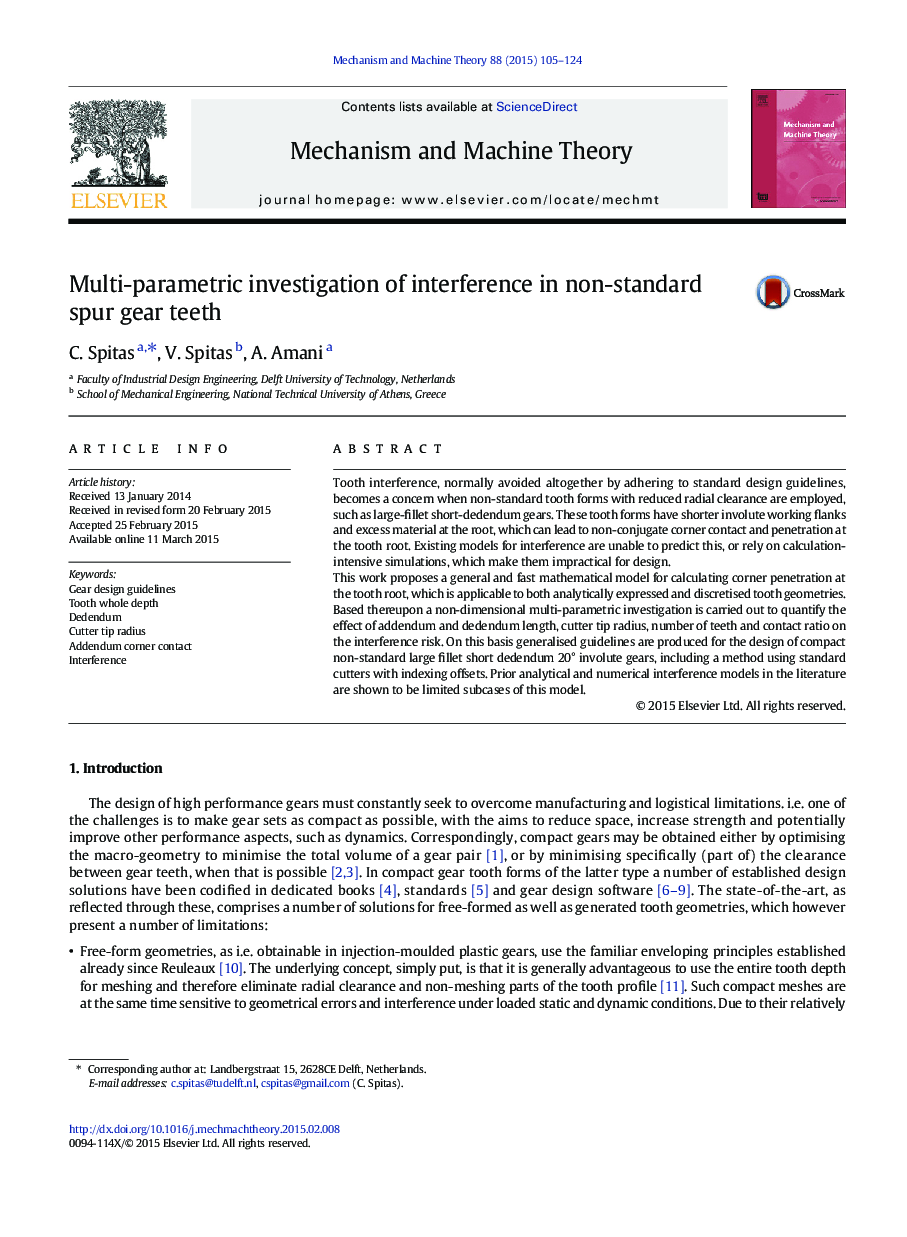| Article ID | Journal | Published Year | Pages | File Type |
|---|---|---|---|---|
| 801756 | Mechanism and Machine Theory | 2015 | 20 Pages |
Tooth interference, normally avoided altogether by adhering to standard design guidelines, becomes a concern when non-standard tooth forms with reduced radial clearance are employed, such as large-fillet short-dedendum gears. These tooth forms have shorter involute working flanks and excess material at the root, which can lead to non-conjugate corner contact and penetration at the tooth root. Existing models for interference are unable to predict this, or rely on calculation-intensive simulations, which make them impractical for design.This work proposes a general and fast mathematical model for calculating corner penetration at the tooth root, which is applicable to both analytically expressed and discretised tooth geometries. Based thereupon a non-dimensional multi-parametric investigation is carried out to quantify the effect of addendum and dedendum length, cutter tip radius, number of teeth and contact ratio on the interference risk. On this basis generalised guidelines are produced for the design of compact non-standard large fillet short dedendum 20° involute gears, including a method using standard cutters with indexing offsets. Prior analytical and numerical interference models in the literature are shown to be limited subcases of this model.
